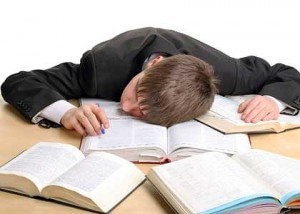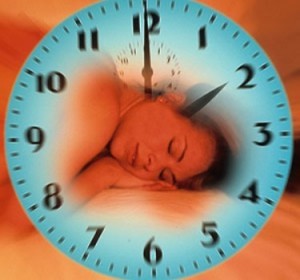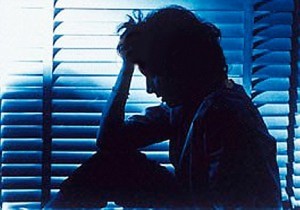Sleep is a dynamic complicated condition during which brain performs quite a lot of activities and produces bone, nervous and muscular tissues and sleep disorders are all the conditions which slow down or prevent all those critical tasks. A night full of sleep goes through different stages (stages 1, 2, 3, 4, and REM) and each stage differs from one another. REM sleep may particularly be very important stage considering good health. Presence of certain irregularity or sleep disorders may cause detrimental effects on health. Sleep disorders are a group of disturbance characterized by disruption in an individual’s amount of sleep, timing and most importantly the quality of sleep. It hampers daytime activity level and promotes fatigue. It is very essential to have its proper treatment without any delay.
Sleep Hours Differ For Different Individuals
For adults it is recommended that they take 7 to 8 hours of sleep. However, it is difficult to be particular on the sleep timing. Amount of sleep varies from individual to individual. A short sleeper takes only 3 to 4 hours of sleep, whereas, long sleeper needs more than 10 to 11 hours of sleep. Both of them actually function worse when their sleep timings are increased or decreased. Another category, recognized as variable sleepers, switch to short sleep and long sleep reacting towards their state of mind. Age is a big factor contributing to the amount of sleep or ability to sleep. A newborn may need 16 to 18 hours of sleep; an adolescent may require 10 to 11 hours of straight sleep, while a person above 60 may take a short nap after lunch and then hardly sleep only 5 hours a night. With age, some people adopt different sleep patterns adopting the work culture, a new lifestyle or change in their mental and physical health. These are the people who are found to be the victim of sleep disorders sooner or later in their life.
What Causes Sleep Disorders?

To meet with the demand of personal and professional life, cutting back on needful of sleep can seem like the only alternative. The never ending list of jobs that one has to perform on daily basis deprives them of the time for a little fun. For them a solid eight hours of sound sleep is a dream only which they would surly get one day. They cannot afford to spend such long hours sleeping. But truth is that they cannot afford not to.
A good eight hours of sleep consist of a series of diverse sleep cycles that rejuvenate mind and body. Even a sleep disturbance during a long journey takes a toll on the overall performance of the body and affects the ability and efficiency to handle work stress. For a body to stay healthy and feel best; sleep is its necessity not a luxury. Learn more about sleeping, kind of sleep disorders and what can be done to bounce back from a sleep disorder and get a sound sleep.
Types Of Sleep Disorders
There are more than 80 sleep disorders currently listed in International Classification of Sleep Disorders. It has been categorized in two main categories dyssomnias and parasomnias. Sleep disorders can have one more category that is more tangential and relates to the conditions such as alcoholism and depression.

Dyssomnias – when there is a difficulty in initiation of the sleep process or going over all the stages of sleep comfortably; it is known as dyssomnias sleep disorder. Some of the most common in this category are restless legs syndrome, obstructive sleep apnea, delayed sleep phase syndrome and sleep disorders related to the biological clock such as jet lag and shift work sleep disorders.
The sleep disorder can further be divided into three sub categories;
- Intrinsic Sleep Disorders
- Extrinsic Sleep Disorders
- Circadian Rhythm Sleep Disorders
Parasomnias – these are the clinical disorders that are not related to the processes such as circadian rhythm or biological clock that governs the sleep-wake cycle. Parasomnias consist of inappropriate physical behaviors that break specifically during sleep.
The word “physical” determines most of the parasomnias. Sleep disorders that involve some sort of action or movement come under this category. Sleepwalking, sleep enuresis, sleep starts, bruxism are few examples that helps to understand the criteria of this particular category. It is not a rule but it surely it helps to determine majority of parasomnias. Nightmare, which also sometimes encroaches into sleep, falls under the category of parasomnias sleep disorders.
Furthermore, this category has been divided in four sub categories:
- Arousal Disorders
- Sleep-Wake Transition Disorders
- Parasomnias that is associated with REM sleep
- Other Parasomnias
Sleep Disorder Related With Mental And Physical Conditions

Most mental disorders are closely bound with some sort of sleep deprivation that affects the patient’s overall health. The ICSD has listed various mood disorders, anxiety disorders, panic disorders, alhocolism and psychoses under sleep disorder category. These physical and mental states are commonly seen in patients who suffer from sleep complications and thus they need a full diagnosis of their condition from a sleep specialist.
This category sleep disorders also brakes up into three sub-categories.
- Associated Mental Disorders
- Associated with Neurological Disorders
- Associated with Medical Disorders
Maintain Sleep Hygiene For Peaceful Slumber And To Cure Sleeping Disorders
Insufficient sleep due to any of the sleep disorder causes fatigue and daytime sleepiness. This results in poor work performance and low productivity. Sleep hygiene is a behavioral factor that commonly triggers sleep disorders. Here are a few tips to improve on sleep hygiene for a quality sleep:
- Sleep-wake cycle is governed by the internal clock know as body clock. Always obey your body clock and go to sleep when body tells that it’s ready.
- Improve on sleep environment as restful of sleep is more likely when your bedroom is comfortable and cozy.
- It is a mistaken belief that social drugs and medications motivate sleep.
- Avoid stress especially at bedtimes. If you are a chronic bedtime worrier try using some relaxation techniques such as meditation or some light music.
- Avoid caffeinated drinks just before going to bed.
There are so many things that can be adopted to improve sleep hygiene and to reduce effects of sleep disorders. If nothing works don’t hesitate consulting a sleep specialist.
Sleep Disorders In Women:
According to national sleep foundation, women are more likely to have sleeping difficulties than men. Biological conditions associated with women and girls like pregnancy, menstrual cycle, and menopause affects their sleep regime. Hormonal changes that a woman undergoes throughout the month (secretion of estrogen and progesterone) have a profound impact on her sleep.
There is a women perspective of each sleep disorder type. Insomnia, restless legs are the kind that can be seen in normal as well as in woman’s perspective (Adolescent insomnia, restless legs in pregnancy and later in menopause). There are a few types such as OSA where studies are still being done to find out any close connection between polycystic ovarian disease and these sleeping disorders.
There are different types of medicines that are available for the treatment of sleep disorders in women. The treatment totally depends on how serious or prolong is the sleep disorder. For example, insomnia can become chronic in women if not treated at initial stages and will require a long treatment.
Sleeping medications are gives to treat insomnia and other kind of sleep disorders in women. These medicines contain sedatives that help to promote sleep. However, while using these medicines, care should be taken that the women are not undergoing pregnancy.
Benzodiazepines are the common drugs that are prescribed to fight against sleep disorders in women. Rozerem is also a prescribed drug that helps to fight sleep disorders in women by releasing melatonin and helps to reset the circadian rhythm mechanism in women.
Addressing sleep mechanism throughout a woman’s life cycle is a difficult task; still, sleep researchers who specifically work for gender-specific research are trying their best to understand the impact of hormones, sex and aging upon the sleep, especially in women.
Sleep Disorders In Children
Sleep states are developed before birth. Infants undergo various sleep periods all during the day. As they age, their sleep extends for longer duration at night and has less of sleep periods throughout the day. Newborns do not have any sleep schedule, they sleep continuously. By the time they reach 6 months they develop sleep for almost 14 hours a day with the continued period of about 7 long hours. By 2 years, their sleep pattern changes to 12 hours which includes day time naps and by the age of 4 children they sleep for almost 10 hours.
Important point about sleep disorders
While sleeping disorders do indeed wreck with the lives of so many people, it is important to realize that most of them can be treated completely. Not only there are many ways to diagnose them, but there are numerous treatments for sleep disorders and, due to the development of technology there are also many medical devices to support doctors and people in eliminating their sleep disorders.
